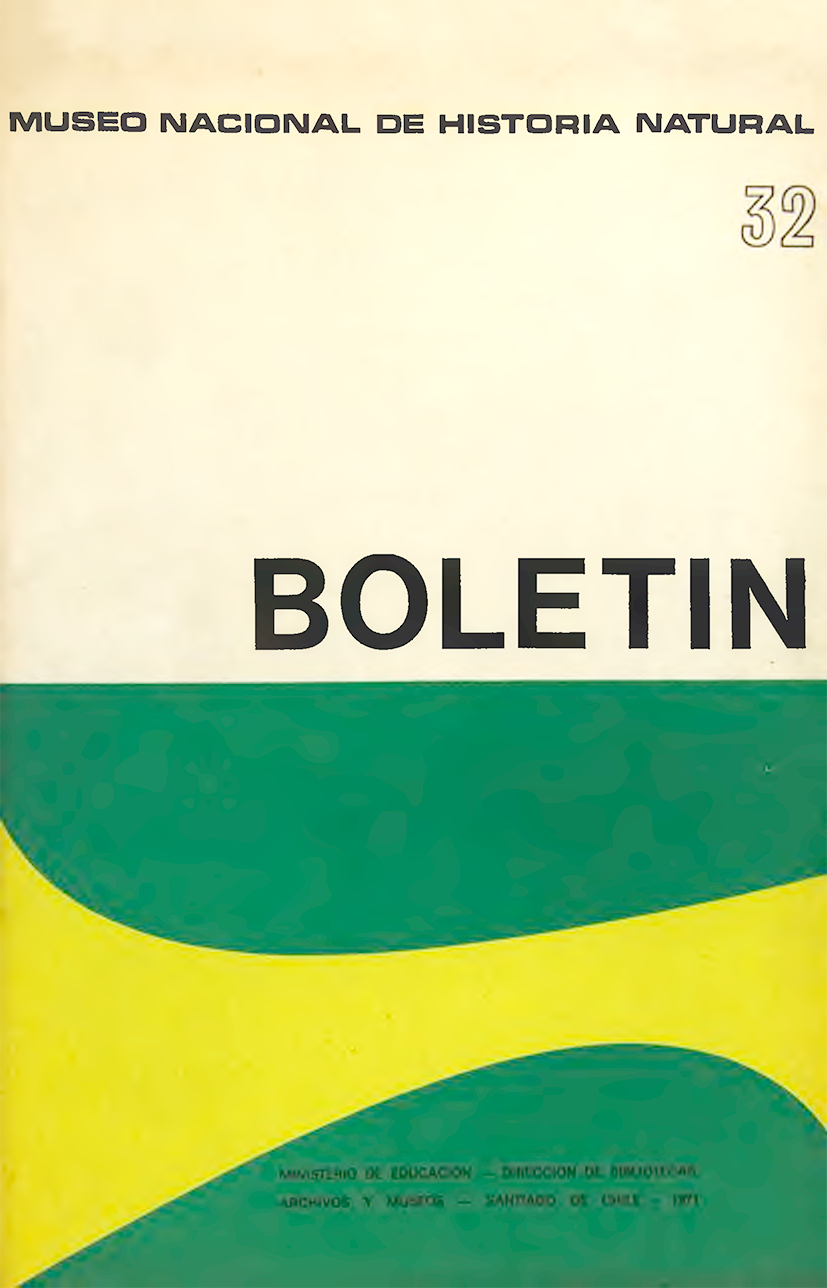Colonización por organismos edáficos de territorios desérticos sometidos a riego (Estancia Castilla, Provincia de Atacama, Chile)
DOI:
https://doi.org/10.54830/bmnhn.v32.1971.548Abstract
The fauna of desert soils in the Atacama region (Chile) was studied in natural conditions and after one to six years of irrigation with underground water. The Invertebrates were extracted from soil samples by means of Berlese -Tullgren funnels. Data of density were expressed in individuals per 1000 cc of soil and species diversity (in bits) was calculated according to the Brillouin and the Shannon index. In no sample of natural desert true soil animals were found. Irrigated fields, surrounded by extensive desertic lands, are thus representing an "island" that only should be colonized by air (wind and birds) and by man transportation. Density, number of species and diversity of soil animals are regularly increasing in cultivated fields as the number of years of irrigation increases. The first colonization seems to be performed in stochastic form and the possibility of new species arrival seems to be much greater than the very low number of successful colonizations. The probability of success in the colonization is greater in fields having or having had alfalfa cultivations. During the first three years of irrigation preferably deep layers of soil are colonized, mainly by saprophagous and phytophagous species of Arthropods. In the following yean the predatory species strongly increase and the upper 20-30 cm of soil are populated in a similar way. The original structural pattern of these soil animal communities is the concurrence of a very low species diversity per sample with a great heterogeneity between samples. Moreover density per sample is excessively low. Summarizing, probabilities of colonization by soil fauna are directly depending on the "exposition time" of these irrigated fields, on the improvement of soil structure and the increase of nitrogen and organic matter content coming after a leguminous prairie, on the increase of microflora density (particularly soil fungi) and on the previous presence of other animal species allowing the establishment of more advanced trophic levels. The possibility of successful colonization ia restricted by the environmental "resistance", represented in thi case by the progressive soil salinization, by the frequency of agricultural interferences (like ploughing) and by the intensity of pesticide applications; this last factor if the major one to increase the extinction rate of new arriving species.
Downloads
Downloads
Published
How to Cite
Issue
Section
License

This work is licensed under a Creative Commons Attribution-NonCommercial-NoDerivatives 4.0 International License.




